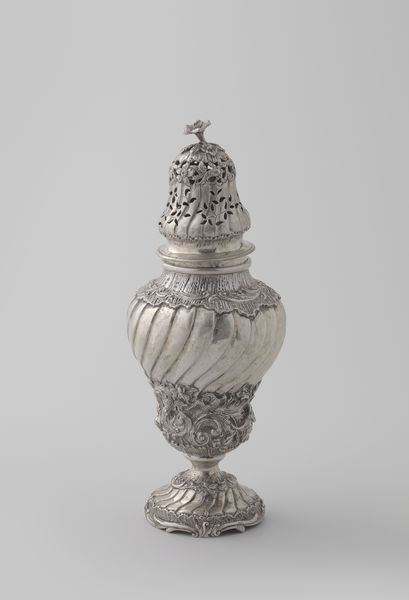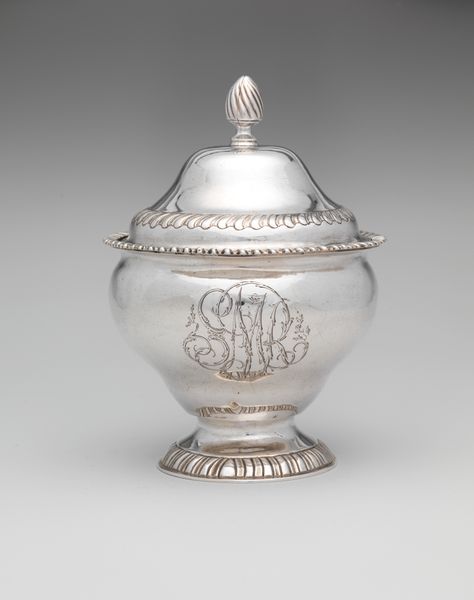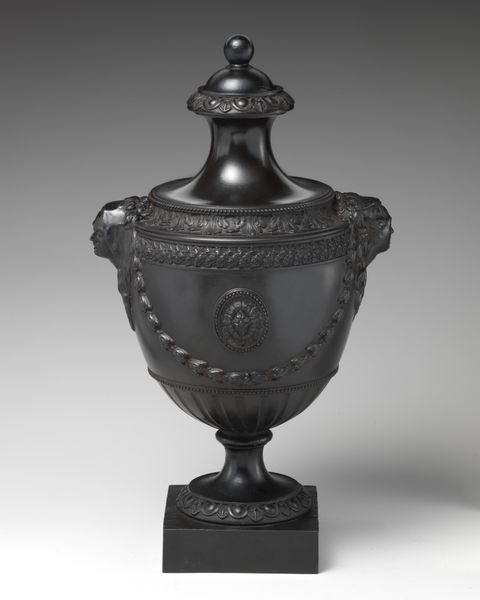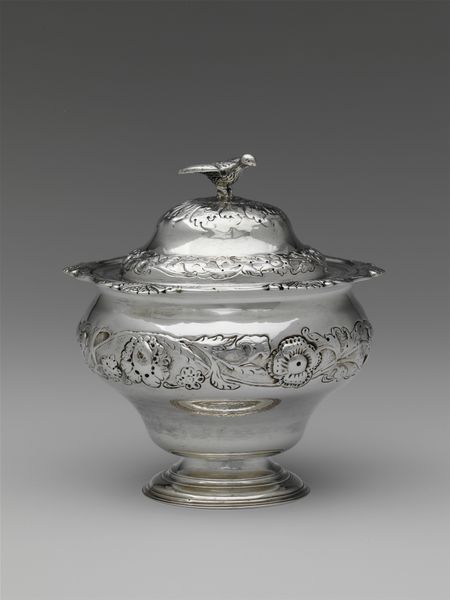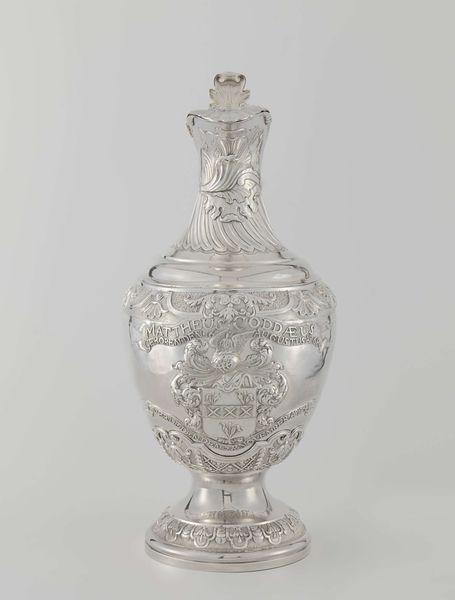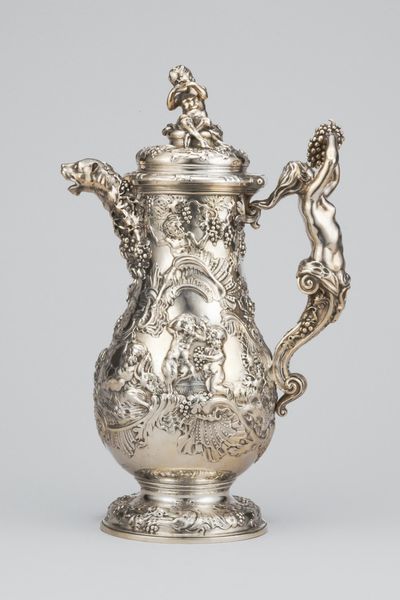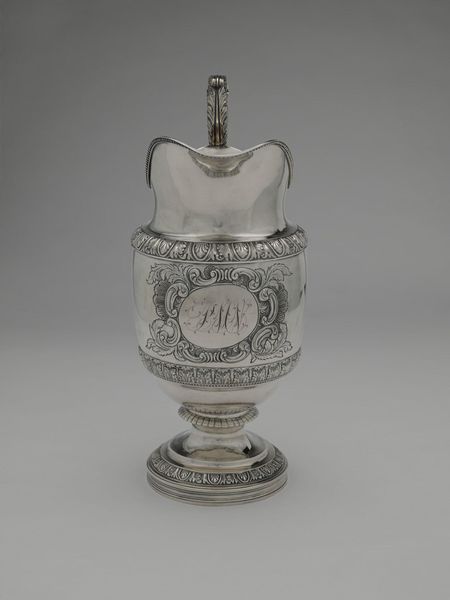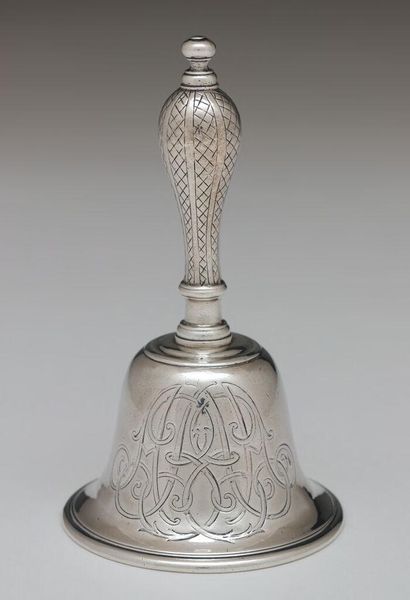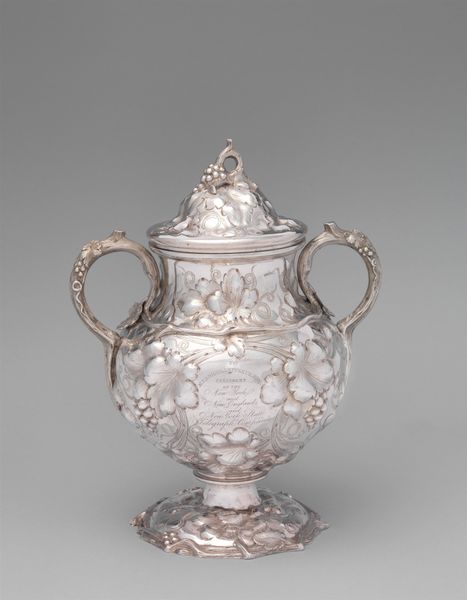
Dimensions: Overall: 6 5/8 x 4 3/16 in. (16.8 x 10.6 cm); 8 oz. 19 dwt. (278.6 g) Foot: Diam. 3 1/16 in. (7.8 cm) Bowl: H. 4 11/16 in. (11.9 cm); 7 oz. (217.6 g) Cover: 2 1/4 x 3 1/16 in. (5.7 x 7.8 cm); 1 oz. 19 dwt. (61 g)
Copyright: Public Domain
Editor: Here we have Myer Myers' "Sugar Bowl," crafted from silver between 1772 and 1776. It just screams Rococo to me with all those curves and floral decorations. It's like a little sculpture. How would you interpret the significance of an object like this, particularly within its historical context? Curator: Well, sugar itself held significant socio-economic weight in the 18th century. It was a highly desirable commodity inextricably linked with colonial trade, and, we can’t forget, the brutal realities of enslaved labor in the Caribbean. Displaying sugar in such an elaborate vessel became a symbol of wealth and status. Editor: So this bowl wasn't *just* about holding sugar. It was making a statement. Who was Myer Myers and where did he create this? Curator: Myers was a prominent silversmith in colonial New York, a period defined by growing mercantile power. Objects like this reinforced the social hierarchy and the aspirational tastes of the emerging elite. Do you notice any specific decorative elements that seem particularly pointed? Editor: The florals are interesting. I guess they soften the edges a little and seem quite detailed and bespoke. So it feels quite celebratory in its execution? Curator: Exactly! They are very much in vogue, reflective of the popular styles circulating amongst wealthier merchant classes. Think about it—this is luxury, conspicuously consumed at a time of intense social and political ferment, pre-revolution. What do you think that conveys? Editor: It creates an interesting juxtaposition. It represents excess when revolution is just around the corner! Thank you; I am viewing this silver piece in a very different light now. Curator: Indeed, everyday objects can reveal a great deal about societal values and tensions. Considering who commissioned this piece, and what it would have signified, shows just how powerful material culture can be.
Comments
No comments
Be the first to comment and join the conversation on the ultimate creative platform.
